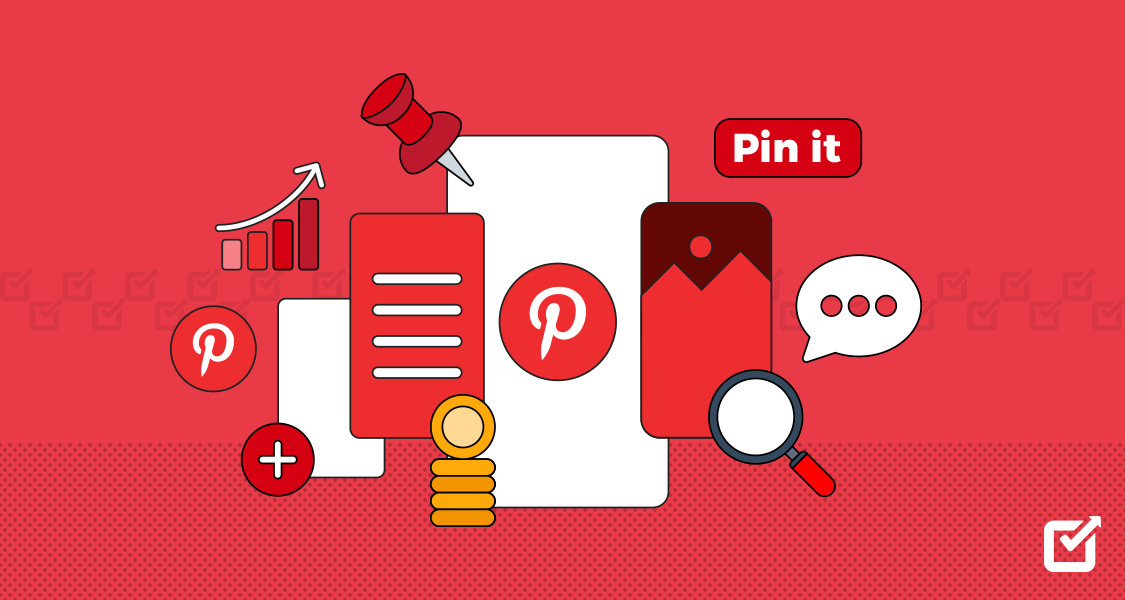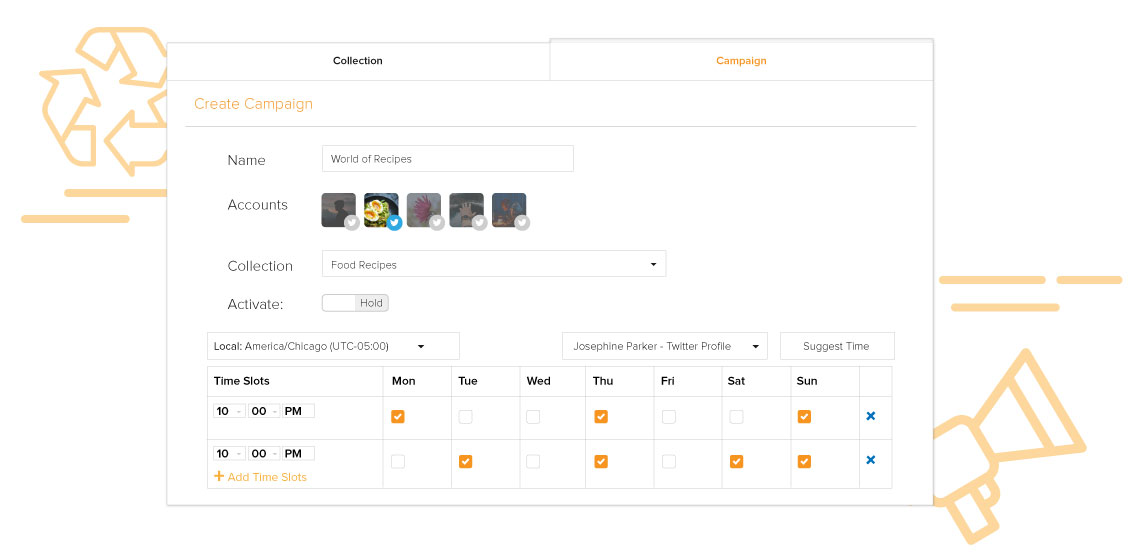In today’s world, how we find jobs and hire people has changed a lot. 87% of professionals agree that finding the right person for a job isn’t the same as it used to be.
Nowadays, employers think personal skills (like communication or teamwork) are just as critical as technical skills (like knowing how to use a computer program). A huge 97% of employers believe this. This change is good for both companies and people looking for jobs. But, we can’t deny that looking for a job can be stressful. In fact, 73% of people looking for a job say it’s stressful.
That’s where social recruiting comes in. It’s a way to use social media to advertise job openings, talk to potential candidates, and ultimately find the perfect person. It’s a win-win situation for employers and job seekers because it makes the process easier and less scary.
In our detailed guide, only available on Social Champ, we will talk about everything you need to know about social recruiting. We’ll give you tips on how to write job ads that get people’s attention. Whether you’re a company looking to learn more about this new way of hiring, or a person looking for a job and curious about what social recruiting is, this guide is for you.
Forget the old days of job hunting! Things have flipped completely. Nearly everyone (87% of professionals, to be exact) agrees finding the perfect person for a job is a whole new ball game.
Now, companies care just as much about your “people skills” (like communication and teamwork) as they do about your technical skills (like knowing your way around software). In fact, 97% of employers agree! This shift is awesome for both companies and job seekers, but let’s be honest, finding a job can still be super stressful (73% of people can attest to that!).
That’s where social recruiting comes in. It involves using social media like Facebook or LinkedIn to find the perfect candidate, kind of like online dating for jobs! Companies can post openings, chat with potential hires, and ultimately, find their ideal match. This is a win-win because it makes the whole process way easier and less intimidating for everyone involved.
Curious about how this works? We’ve got a detailed guide that explores social recruiting. So, whether you’re a company looking to hire or a job seeker wanting to learn more, this guide is your golden ticket! But before you get started, here’s a little tip: Try a social media scheduling tool, as it can make posting jobs super easy!
Need to Publish Hiring Posts? Social Champ’s Got You!
Leverage our scheduling tool to create, schedule, publish, and monitor the activity on your social recruitment posts!
What Is Social Recruiting?
Social media plays a vital role in modern recruitment. With platforms like LinkedIn, Facebook, and Twitter, companies can source and engage top talent.
Recruiters can post job openings, share updates, and curate content to attract both active and passive candidates. This approach allows for quick and cost-effective outreach to a broad talent pool.
A key advantage is the ability to target specific groups based on skills and interests. Through features like targeted advertising, recruiters can streamline their efforts and reach the ideal candidates.
Furthermore, social media allows companies to showcase their culture and values. By sharing stories, testimonials, and engaging content, they can attract candidates who are a good fit for their organization, leading to better long-term matches.
Another benefit is that social recruiting allows employers to showcase their company culture and values. Sharing stories, testimonials, and engaging content can attract candidates who fit well with their organization. This leads to better long-term matches between candidates and companies.
Overall, social recruiting has changed the way companies find talent. It offers a more personalized experience for both employers and job seekers.
Types of Social Media Recruitment
There are several types of social media recruitment, such as the following:
- Posting and Advertising: Sharing job openings with targeted audiences, utilizing paid options for broader reach.
- Community Engagement: Joining relevant online groups to connect with potential candidates and share opportunities.
- Employee Referrals: Encouraging employees to share jobs on their networks to leverage their connections.
- Employer Branding: Showcase company culture and attract talent through branding initiatives.
- Candidate Sourcing: Search for potential candidates based on their online profiles and skills.
- Relationship Building: Interact with candidates, answer inquiries, and foster long-term connections.
Types of social media recruitment means using different ways on social media to find people for job openings. This can include posting jobs on sites like LinkedIn, talking to people who might want to work for you, showing ads to certain groups of people, and sharing what it’s like to work at your company.
Social media recruitment also involves connecting with other professionals online, joining groups related to your industry, and using data to make your recruitment efforts better. By using these different ways to recruit on social media, companies can reach more people, find a variety of candidates, and connect with potential employees in today’s digital world.
Related Article: 15+ Powerful Social Media Marketing Tips for Businesses in 2024
Benefits of Social Recruiting
Here are the amazing benefits of social recruiting.
Wider Talent Pool
Social recruiting extends job postings beyond traditional channels like job boards and career websites, reaching a diverse pool of candidates active on social media platforms. This expanded reach connects employers with various candidates, including passive job seekers open to new opportunities.
Cost-Effectiveness
This approach is often more cost-effective than traditional methods. Posting job openings on social media platforms is typically free, eliminating the need for expensive job board subscriptions or advertising costs. Additionally, targeted advertising options on social media platforms maximize the return on investment by reaching specific demographics and segments.
Enhanced Employer Branding
Social recruiting allows employers to showcase their company culture, values, and workplace environment. By sharing engaging content, employee testimonials, and behind-the-scenes glimpses, organizations enhance their employer branding, attracting candidates who resonate with their values.
Improved Candidate Engagement
Social media platforms offer an interactive environment for recruiters to connect with candidates. Direct messaging, commenting, and sharing features enable real-time communication, enhancing engagement throughout the recruitment process.
Faster Hiring Process
With social recruiting, you can expedite the hiring by facilitating quick communication between recruiters and candidates. Real-time interaction on social media platforms enables recruiters to promptly respond to inquiries, schedule interviews, and make hiring decisions, reducing time-to-fill metrics and ensuring a smooth candidate experience.
How to Build A Social Recruiting Process
Building a strong social recruiting process allows you access to a diverse pool of potential candidates and gather a competitive edge in the hiring game. Here’s a step-by-step guide to get you started:
Step 1: Plan Your Course – Goals & Target Audience
Before employing this method, you must create a plan of action. Consider what kind of treasures (or exceptional talent) you are seeking. Are you on a mission to recruit seasoned veterans or energetic, fresh-faced graduates?
Once you clearly understand the roles you need to fill and the type of candidates who would thrive in them, it’s time to identify the platforms they are most active on. Are they LinkedIn sharks, Twitter enthusiasts, or community forum regulars? Knowing where your target audience hangs out online is key to casting your net effectively.
Step 2: Build Your Employer Brand – A Beacon for Top Talent
Your company culture is your unique selling proposition. Showcase it with enthusiastic content that reveals the heart and soul of your organization. Share authentic stories of your employees, their accomplishments, and the vibrant environment they work in. Let their voices become your brand ambassadors, singing your praises through engaging video testimonials. That said, you must maintain a unified brand voice across all social media platforms!
Step 3: Choose Your Platform
While LinkedIn is a professional space, don’t underestimate the potential of other platforms. You can explore platforms like Twitter, where industry insights and trending hashtags can help you connect with niche talent. There are over a million jobs posted on X (Twitter) in 2024.
Additionally, Facebook groups and industry-specific forums can be goldmines for starting discussions and building relationships with potential candidates. But keep in mind that the platform is just a tool; your ability to engage and connect is what truly matters.
Step 4: Create Content That Engages
Forget the dry job descriptions of yesteryear. It’s time to create content that truly resonates with your target audience. Share industry insights that position you as a thought leader, company news that excites potential recruits, and employee interviews that showcase your unique work environment.
Don’t be afraid to inject some personality! Fun and lighthearted content related to your company culture can go a long way in breaking the ice and building a connection. Spice things up with different formats like videos, infographics, blog posts, and interactive polls to keep your audience engaged and coming back for more. Be sure to use the right hashtags, as they can lead potential candidates straight to your content.
Step 5: Build Bridges – Focus on Relationships and Engagement
Social media is a two-way street. Don’t just broadcast; actively participate in relevant online communities and discussions. Share your expertise, answer questions thoughtfully, and build genuine connections with potential candidates.
Every interaction is an opportunity to make a positive impression. Respond promptly to comments and messages, as this can demonstrate your professionalism and commitment to building trust. Consider targeted social media ads to reach a wider audience and attract those hidden gems in the talent pool.
Step 6: Measure and Adapt – The Journey Never Ends
Tracking your progress is the most critical step in ensuring the success of your social recruiting. You must monitor your content’s reach, engagement, and click-through rates. These metrics will tell you exactly what resonates with your audience and what needs tweaking. You can then make the necessary changes and adapt to your audience’s needs.
5 Examples of Social Recruiting and Employer Branding
Social media has transformed how companies approach recruitment and present their employer brand. Platforms like Twitter, Facebook, Instagram, and LinkedIn allow organizations to connect with a broader pool of candidates while offering insights into their company culture and values. Here are five real-world examples of effective social recruiting and employer branding:
UPS Jobs on Twitter
UPS Jobs uses Twitter to post job openings and share content about their company culture. They use the hashtag #FutureYou in job posting tweets, sparking excitement among potential candidates. By providing a glimpse into the UPS work environment, they make followers feel like part of the team, strengthening their employer brand.
Inside Zappos on Facebook
Zappos showcases its vibrant company culture and celebrates employees through Inside Zappos on Facebook. During their 21st birthday celebration amid remote work, Zappos sent surprise gift boxes to each employee, showcasing camaraderie even in challenging times. This gesture reflects the inclusive culture candidates can expect at Zappos.
ADP Careers on Twitter and Instagram
ADP effectively highlights employees and their achievements on Twitter and Instagram. By allowing employees to share their experiences, the company provides authentic insights into its culture and work environment, enhancing its appeal as an employer.
Hilton Careers on Instagram
Hilton’s recruitment-focused Instagram account celebrates diversity and inclusion, such as during Women’s History Month. Using the hashtag #WeAreHilton, both employees and the official account share content that reinforces a sense of belonging and shared values among current and potential candidates.
Spotify on LinkedIn
Spotify’s LinkedIn page features brief, shareable videos of employees worldwide, offering a glimpse into different departments and offices. This showcases Spotify’s global workforce and diverse culture, giving potential candidates a comprehensive view of what it’s like to work there. Their use of the hashtag #jointheband aligns with their music-themed branding, enhancing their appeal to prospective employees.
Effective Social Recruiting Strategies
Social recruiting is a strong way to use social media to find great people and make the company look good. We will talk about Social Recruiting’s meaning and its Strategies.
Building a Strong Online Presence
These days, potential employees research companies online before applying. A robust online presence acts as your digital storefront, showcasing your company culture, values, and what it’s like to work there. This transparency fosters positive first impressions and attracts qualified candidates who align with your brand.
Go beyond just having profiles on various platforms. Each platform like LinkedIn, Facebook, Twitter, and Instagram has unique strengths. Leverage these features to share engaging content, highlight company achievements, and showcase employee stories. Additionally, consider relevant industry-specific platforms like GitHub for developers or Behance for creative professionals.
By consistently maintaining and updating your online profiles, you increase visibility and allow potential candidates to discover and connect with your company.
Tell Your Company’s Story
Being on social media is super important for finding new people to work at your company. But it’s not just about being there—it’s about showing off what makes your company awesome. That’s where telling a story about your company comes in.
To do this, you need to make sure your social media profiles tell a story that shows what makes your company different. It’s not just about posting job ads or company news. It’s about sharing what your company believes in, what it stands for, and what it’s like to work there.
One way to do this is by sharing stories from employees about what it’s really like to work at your company. These real-life stories show what being part of the team is like. You can also show behind-the-scenes stuff, like what happens daily in the office. This gives people a better idea of what your company is all about.
And don’t forget to talk about all the cool things your company has done! Sharing stuff like awards or big achievements shows that your company is successful and does awesome stuff. By sharing these kinds of stories, you can attract people who really believe in what you stand for and want to be part of your team.
Related Article: Everything You Need to Know About Social Media Branding in 2024
Turn Employees into Company Cheerleaders
Did you know that your employees can be your best promoters? It’s true! They can play a big role in helping the company find new talented people. This is called employee advocacy, and it’s really powerful.
Here’s how it works: When employees share job postings, engage with content, and say good things about the company on social media, it’s like they’re telling their friends and followers how great it is to work there. And because they work there, people trust what they say.
Encouraging employees to do these things can make a big difference in the company’s efforts to find new employees. It’s like having a whole team helping find the perfect candidates. And the more employees join in, the more people will see and trust the company.
Companies can set up an employee advocacy program to make this happen. This involves giving employees the tools and training they need to talk positively about the company online. It helps them feel proud to be part of the company and makes the company look good to others.
Implement Targeted Recruitment Campaigns: Reaching the Right People
Using social media for recruiting is like having a superpower—it lets companies find exactly the kind of people they’re looking for. This is where targeted recruitment campaigns come in, and they’re pretty amazing.
Here’s how they work: Social media platforms have tools that let companies pick who sees their job postings. They can choose based on age, interests, and what kind of job someone already has. This means the job posting reaches people who are an excellent fit for the job. It’s like finding a needle in a haystack, but way easier!
Using targeted recruitment campaigns, companies can make sure their job postings reach the right people. This increases the chances of finding someone who’s really good at the job. Whether through sponsored job postings that appear in people’s feeds, targeted ads that appear to specific groups, or messages sent directly to people who fit the criteria, targeted recruitment campaigns help companies make the most of their recruiting budget and get the best results.
Building Relationships in Social Recruiting
Social recruiting is more than just posting job ads. It’s about forming real connections with people. That means actively talking to potential candidates, answering their questions, and joining industry conversations.
When companies respond to messages and start conversations, it shows they care about getting to know potential employees. This genuine interest makes them stand out as great places to work.
By engaging with candidates honestly and providing helpful information, companies show they’re not just looking to fill a job—they want the right person for their team. This personal connection can lead to lasting relationships with top talent.
Common Social Recruiting Challenges
Social media has become a vital tool for recruiters to connect with potential candidates and showcase their company’s brand. However, alongside the benefits of social recruiting, there are several challenges that recruiters and organizations face. We’ll explore these common challenges and discuss strategies to overcome them.
Finding the Right Candidates
One of the main hurdles in social recruiting is finding the right candidates from the vast pool of social media users. With millions of profiles to sift through, recruiters often struggle to pinpoint the most suitable candidates for their job openings. Limited search functionalities on some platforms add to this challenge, making it harder to narrow down the candidate pool effectively.
Maintaining Brand Consistency
Consistently representing the company’s brand across various social media platforms can be tricky, especially when multiple recruiters or departments are involved in social recruiting efforts. Inconsistent messaging, branding, and tone can dilute the company’s brand identity and confuse potential candidates, impacting the effectiveness of recruitment efforts.
Engaging Passive Candidates
Engaging passive candidates, who are not actively seeking job opportunities, presents a unique challenge in social recruiting. Convincing these candidates to consider a new role requires a strategic approach beyond traditional job postings. Recruiters must find innovative ways to capture the interest of passive candidates and showcase the value of their company’s opportunities.
Managing Candidate Volume
Social recruiting often generates many candidate applications and inquiries, overwhelming recruiters and hiring teams. Effectively managing this influx of candidates while ensuring a positive candidate experience is a significant challenge. Recruiters need efficient systems and processes to screen, evaluate, and respond to candidates promptly.
Measuring ROI
Measuring the return on investment (ROI) of social recruiting efforts can be complex due to the intricate nature of social media metrics and the long-term nature of recruitment outcomes. Recruiters find it challenging to quantify the impact of their social recruiting initiatives in terms of metrics like cost per hire, time to fill positions and overall recruitment success.
Overcoming Social Recruiting Challenges
Despite these challenges, there are strategies that recruiters and organizations can adopt to overcome them:
- Utilize advanced search functionalities and techniques to identify and target suitable candidates effectively.
- Establish clear guidelines for branding and messaging across social media platforms to maintain brand consistency.
- Implement personalized engagement tactics, such as targeted messaging and networking events, to attract passive candidates.
- Invest in applicant tracking systems and recruitment software to streamline candidate management processes.
- Implement key performance indicators and tracking mechanisms to measure the success of social recruiting meaning and efforts and make necessary adjustments.
By addressing these common challenges and implementing effective strategies, recruiters can enhance the impact of their social recruiting initiatives and attract top talent to their organizations.
Social Recruiting Mistakes: What Not to Do
Social media has changed how companies hire people, giving them new ways to find potential employees and show off what makes them a good workplace. But when using social media to hire, it’s important to be careful and avoid common mistakes that can make it harder to find the right people. Let’s look at some things you should avoid when using social media to hire new employees.
Forgetting About Your Company’s Image
Your company’s image, or what people think of it as an employer, is really important for attracting good employees. If you don’t keep your company’s image positive and consistent on social media, it could make people not want to work for you. Using different messages or not showing what it’s like to work at your company can make people confused and less likely to want to work for you.
Not Talking to People Who Might Want to Work for You
Using social media to hire isn’t just about telling people about job openings. It’s also about talking to people who might want to work for you. If you don’t reply to messages or questions quickly, it can make people think you don’t care about them. Potential employees want to feel like you value them and their time, so it’s important to talk to them and be friendly.
Not Respecting People’s Privacy
Social media has a lot of personal information, so it’s important to be respectful of people’s privacy. If you don’t follow privacy rules or you don’t handle people’s information carefully, it can hurt your company’s reputation and even get you in trouble with the law. Always ensure you’re following the rules and careful with people’s information.
Not Trying to Find the Right People
Social media lets you target specific groups of people, like those with certain interests or skills. If you don’t use these targeting tools well, you might miss out on finding the right people for your job openings. It’s important to use these tools to reach the people who are the best fit for your company.
Not Being Consistent and Following Up
Using social media to hire is all about being consistent and keeping in touch with people. If you only post sometimes or you don’t follow up with people after you talk to them, it can make people feel like you’re not serious about hiring them. Make sure you post regularly and follow up with people to keep them interested in working for you.
Summing Up
Social recruiting is an important and ever-changing method for finding new employees. As we move, it’s crucial for recruiters and companies to keep up with the latest trends and tools in social recruiting. By using social media platforms effectively, recruiters can reach many different kinds of candidates, create a strong employer brand, and make the hiring process smoother.
Whether it’s using advanced targeting options, talking meaningfully with candidates, or following privacy rules, staying on top of things is vital for successful social recruiting jobs. By using the advice and tips from this guide, recruiters can set themselves up for success in finding great talent and helping their companies grow through social recruiting.









